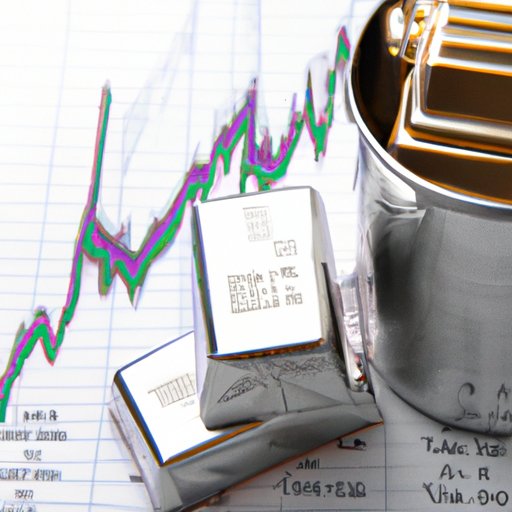Introduction
Investing in silver can be a lucrative option for those looking to diversify their portfolios or protect themselves against the risks of inflation. This article will discuss the various benefits of investing in silver, the historical significance of the precious metal, current market trends, comparisons to other investment options, and strategies for investing.
Highlighting the Benefits of Investing in Silver
Investing in silver has many advantages over other types of investments. One of the primary benefits is financial security in times of economic uncertainty. Silver is a tangible asset that is not subject to the same fluctuations as stocks, bonds, and other paper assets. Therefore, it can provide stability and protection against the risks of inflation.
Another benefit of investing in silver is the potential for capital appreciation. Silver is a commodity with a limited supply and high demand, so its value is likely to increase over time. Additionally, silver is a highly liquid asset, meaning it can easily be converted into cash if necessary.
Finally, investing in silver can help diversify your investment portfolio. By adding silver to your portfolio, you can reduce your overall risk and potentially increase your returns. Silver can also act as a hedge against other investments, such as stocks and bonds, which may be more volatile.

Exploring the Historical Significance of Silver
Silver has been used as a form of currency since ancient times. In many cultures and economies, silver was used as a medium of exchange and store of value. For example, in the Roman Empire, silver coins were used as currency. In China, silver was used as a form of payment until the 19th century.
The use of silver as a currency continued throughout the Middle Ages and into the modern era. In the United States, silver coins were minted from 1794 to 1964. These coins were circulated as legal tender until 1971, when the U.S. government officially ended the convertibility of silver coins into dollars.

Examining the Current Market for Silver
Today, silver is primarily used for industrial purposes, such as electronics and jewelry. However, silver is still considered a valuable asset and is traded on the commodities markets. The current market for silver is influenced by several factors, including supply and demand, price trends, and external factors.
The supply and demand of silver are key drivers of its price. Silver is a finite resource, so its supply is relatively fixed. Demand, on the other hand, is driven by industrial uses, investment demand, and speculation. When demand is higher than supply, the price of silver increases.
The price of silver is also affected by price trends. Over the past few decades, the price of silver has risen steadily, although there have been periods of volatility. Generally speaking, silver tends to move in line with gold, although it is generally less volatile.
Finally, external factors such as government policies and economic conditions can also influence the price of silver. For example, the U.S. government has imposed restrictions on the amount of silver that can be mined or imported, which can affect supply and demand. Additionally, global economic events can affect the demand for silver.
Comparing Silver to Other Investment Options
When comparing silver to other investment options, it is important to consider the risk involved. Generally speaking, silver is considered to be a relatively safe investment, as it is not subject to the same volatility as stocks and bonds. However, it is still important to understand the risks associated with any type of investment.
It is also important to consider the pros and cons of investing in silver. On the plus side, silver is a tangible asset that can provide financial security and potential capital appreciation. On the other hand, silver is subject to market fluctuations, so it is important to do thorough research before investing.

Discussing Strategies for Investing in Silver
Once you have decided to invest in silver, it is important to develop a strategy. There are two main approaches to investing in silver: long-term and short-term. Long-term investments are typically more stable, as they are less vulnerable to market fluctuations. Short-term investments, on the other hand, offer the potential for quick profits, but come with increased risk.
In addition to choosing a long-term or short-term investment strategy, it is important to decide between physical silver and paper silver. Physical silver refers to bars, coins, and other tangible forms of silver. Paper silver, on the other hand, refers to derivatives such as futures contracts and ETFs.
Finally, investors can also use hedging strategies to limit their risk. Hedging involves using derivatives such as options and futures contracts to offset losses from other investments. This can help protect against market downturns and minimize losses.
Conclusion
Investing in silver can be an attractive option for those looking to diversify their portfolios or protect themselves against the risks of inflation. This article has discussed the various benefits of investing in silver, the historical significance of the precious metal, current market trends, comparisons to other investment options, and strategies for investing. Before investing in silver, it is important to do thorough research and develop a strategy that fits your individual needs and goals.
(Note: Is this article not meeting your expectations? Do you have knowledge or insights to share? Unlock new opportunities and expand your reach by joining our authors team. Click Registration to join us and share your expertise with our readers.)
